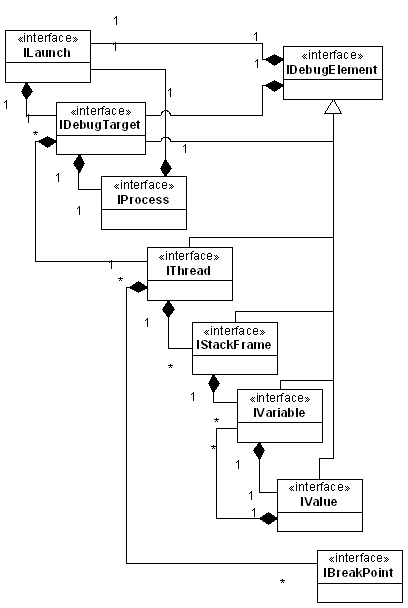I rarely come across real-world data structures which are inherently mutually recursive (a.k.a. Daisy chain recursion in CS literature). Recently, while writing a plug-in related to eclipse.debug, I came across this interesting data structure.
 Source Eclipse.org
Source Eclipse.orgObserve the IVariable ←→ IValue relationship (although most relationships in this object-model is mutually recursive), given an implementation of this model (say JDI) how do you clone an object-tree representing variables on a stack-frame?
The answer is simple: assuming implementation classes Variable and Value just write a simple function to clone variables one by one:
public class Variable {Similarly for Value class:
…
private Value value;
…
public static Variable create(IVariable var) {
Variable v = new Variable() ;
try {
v.setName(var.getName());
v.setType(var.getReferenceTypeName());
v.setValue(Value.create(var.getValue()));
return v;
} catch (DebugException e) {
..
}
}
}
public class Value {
…
private Variable[] variables;
…
public static Value create(IValue var) {
Value v = new Value() ;
try {
v.setType(var.getReferenceTypeName());
v.setValue(...);
IVariable[] variables = value.getVariables();
if (variables != null) {
for (IVariable variable : variables)
v.add(Variable.create(variable));
}
return v;
} catch (DebugException e) {
..
}
}
}
Statement 'Variable.create(yourJDIVariable);' clones entire JDI object. This is one of those intuitive recursion examples which you die to find out IRL. Interesting, isn't it?
This is how your regular stack-frame looks (Variables view):


1 comment:
Hi, I didn't really understand the concept fully , is mutual recursion is something which could create problem , would have been better if it would be little less technical on Intro part. anyway quite valuable information
Javin
Java debugging tutorial and tips in Eclipse
Post a Comment